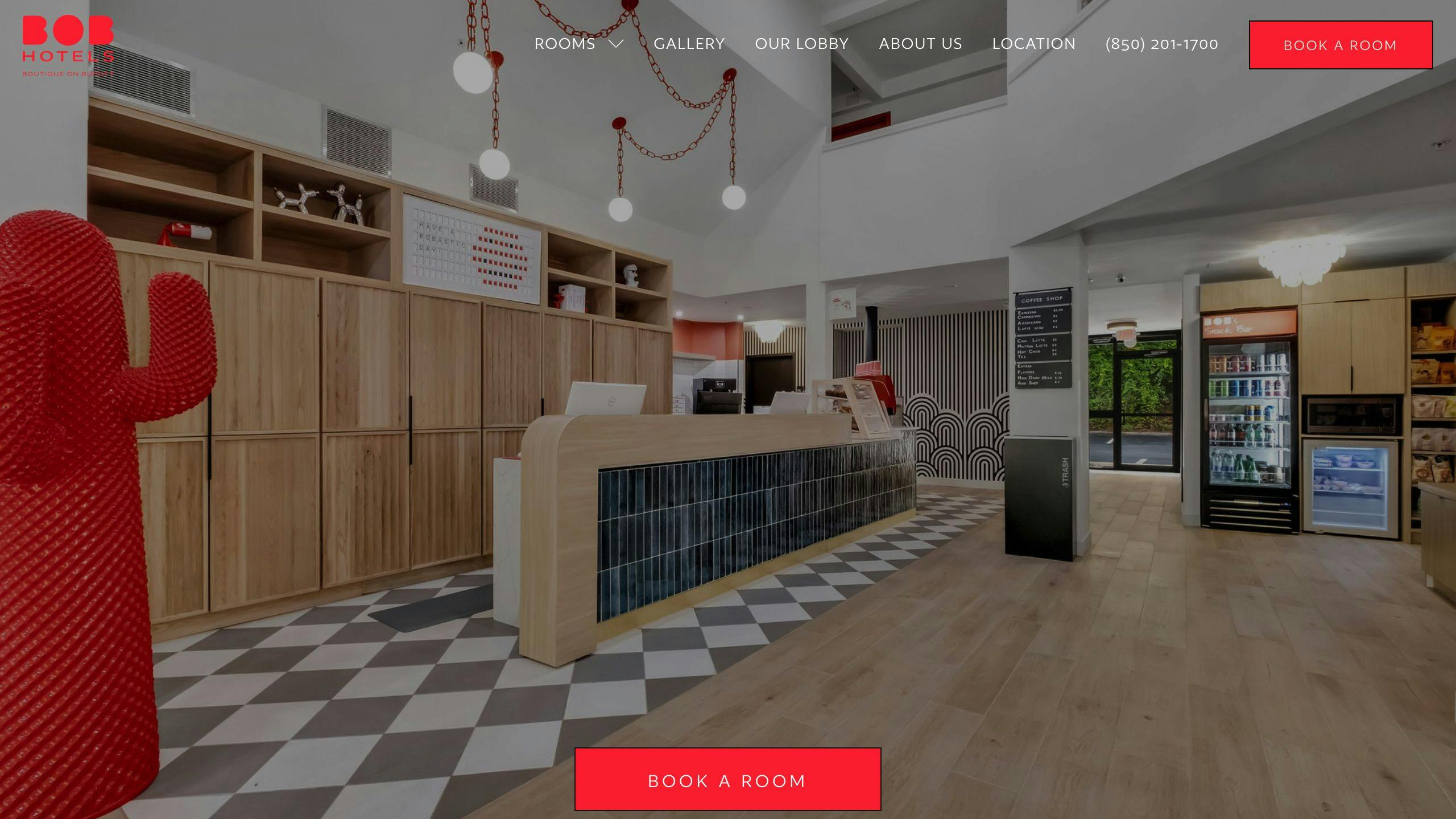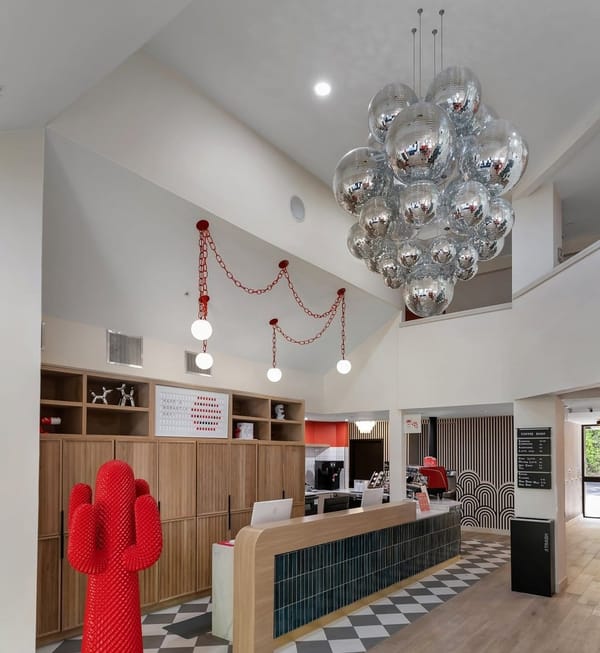Why Brand Consistency Matters in Boutique Hotels
Explore how brand consistency in boutique hotels builds guest trust, enhances experiences, and drives sustainable growth.

Brand consistency is essential for boutique hotels to build trust, attract loyal guests, and drive business growth. A consistent brand creates dependable guest experiences, which 81% of consumers say influences their decisions. For boutique hotels, this means aligning visual identity, messaging, and service delivery across all touchpoints.
Key Takeaways:
- Trust and Loyalty: Consistent branding builds guest trust and encourages repeat bookings.
- Guest Experience: Aligning design, communication, and service creates memorable stays.
- Competitive Edge: Helps boutique hotels stand out against larger chains.
Quick Example:
BOB Hotels Tallahassee uses consistent branding in design, service, and messaging, earning guest loyalty and preparing for expansion in 2025. Their approach shows how brand consistency can fuel growth and success.
Why Is Hotel Brand Consistency Important?
How Brand Consistency Affects Guest Loyalty and Business Growth
Once your brand is well-established, keeping it consistent becomes essential for building guest loyalty and fueling growth. Research highlights that consistent branding directly impacts hotel success by strengthening guest trust and driving long-term business results.
Building Trust and Recognition
Consistency builds trust, which in turn encourages guest loyalty and positive referrals. A study from Cornell University, based on over 30 million reviews, found that consistent branding now plays a bigger role in traveler decisions than location or even chain reputation [3]. Guests are more likely to return when their expectations, based on your brand's promises, align with their actual experience.
Enhancing Guest Experiences Through Brand Alignment
When a hotel’s branding matches its service delivery, it creates memorable guest experiences. This means aligning everything - from design and service quality to communication - across all guest interactions. Such consistent experiences reinforce the hotel’s core values and promises, leaving a lasting impression.
Case Study: BOB Hotels Tallahassee's Approach

BOB Hotels Tallahassee is a great example of brand consistency in action. They offer stylish, budget-friendly stays featuring modern design, dependable amenities like fast Wi-Fi and specialty coffee, and reliable service quality. This consistency has not only earned guest loyalty but also set the stage for their planned nationwide expansion in 2025 [4]. Their story shows how sticking to a clear brand vision can pave the way for sustained growth.
Key Aspects of Brand Consistency for Boutique Hotels
Visual Identity: Logos, Colors, and Design
A strong visual identity - logos, colors, and interior design - plays a key role in creating memorable guest experiences and building brand recognition. For boutique hotels, trust starts with a unified look across all touchpoints. From the website to the physical spaces, maintaining a consistent aesthetic communicates quality and reliability. Pairing this with a matching tone of voice helps create a complete and cohesive brand identity.
Tone of Voice and Messaging
How a boutique hotel communicates matters just as much as how it looks. A consistent tone of voice across platforms like social media, email, and in-room materials strengthens the hotel's identity and builds a connection with guests. According to a Cornell University study:
"Delivering on guests' expectations is crucial for building trust and loyalty" [3]
This isn't just about service quality - it's also about ensuring the brand's message is clear and aligned across all channels.
Consistency in Guest Touchpoints
Every interaction a guest has with the hotel - whether online or in person - shapes their perception of the brand. These interactions, or touchpoints, include:
| Touchpoint Category | Key Elements | Impact |
|---|---|---|
| Digital Presence | Website, booking platforms, social media | Shapes first impressions and sets expectations |
| Physical Space | Lobby design, room aesthetics, amenities | Reflects the brand's quality and promises |
| Service Delivery | Staff interactions, issue resolution | Builds trust and loyalty through personal experiences |
For example, BOB Hotels Tallahassee ensures their design elements remain consistent across their website, physical spaces, and guest services, creating a smooth and reliable experience at every step [4].
When all touchpoints align, guests are more likely to trust the brand and return for future stays. Paying attention to these details is key to maintaining a consistent and trustworthy brand presence.
Strategies for Achieving and Maintaining Brand Consistency
Creating Brand Guidelines
Brand guidelines act as a roadmap for ensuring a unified brand experience across all areas of hotel operations. These documents outline everything from visuals to service protocols, helping maintain a consistent identity.
Here’s what a solid brand guideline should cover:
| Component | Key Elements | Purpose |
|---|---|---|
| Visual and Digital Standards | Logo, colors, typography, website, social media | Creates a unified brand image across platforms |
| Voice and Messaging | Tone, vocabulary, communication principles | Keeps communication consistent and on-brand |
| Service Standards | Guest interactions, operational protocols | Ensures guests receive the same experience every time |
Training Staff and Maintaining Consistency
Staff training is essential for keeping brand values and standards intact. Regular sessions help employees internalize these principles, ensuring they deliver the experience your brand promises. For example, BOB Hotels Tallahassee runs a thorough training program that has been key to their consistent service quality and high guest satisfaction [4].
"Delivering on guests' expectations is crucial for building trust and loyalty, and this can only be achieved through proper staff training and alignment with brand values" [3]
But training isn’t a one-and-done process. To truly uphold consistency, regular evaluations and updates are necessary.
Brand Audits and Continuous Improvement
Frequent brand audits are a powerful tool for spotting and fixing inconsistencies before they affect guest experiences. Conduct these evaluations quarterly or semi-annually, reviewing all touchpoints like your digital channels, physical spaces, and guest feedback. These audits not only ensure your brand stays aligned with its promises but also highlight areas that need attention or refinement.
Conclusion: The Long-Term Benefits of Brand Consistency
Consistent branding can lead to long-term success for boutique hotels by boosting guest loyalty, building a strong reputation, and driving steady business growth. To enjoy these advantages, hotels must prioritize strategies that ensure their brand remains consistent across all areas.
When hotels maintain uniform visual identity, messaging, and service quality at every touchpoint, they establish trust with guests - trust that directly impacts their bottom line. This creates a cycle of positive results, as shown below:
| Benefit | Result |
|---|---|
| Guest Loyalty | Guests return due to dependable experiences |
| Market Recognition | Increased direct bookings and clear differentiation |
| Business Growth | Stable revenue from repeat guests and referrals |
Key Takeaways for Boutique Hotels
Achieving consistency requires a clear plan and actionable steps. Successful boutique hotels often use data analytics to understand guest behavior and preferences, allowing them to fine-tune branding efforts over time [3]. This data-driven approach not only highlights areas for improvement but also ensures the brand stays relevant to its audience.
For hotels aiming to solidify their brand, the focus should be on creating clear brand guidelines, investing in staff training, and performing regular brand audits [1]. These steps, when done consistently, lead to higher guest satisfaction, stronger loyalty, and ultimately, business growth.
A great example is BOB Hotels Tallahassee, which demonstrates how consistent branding across all guest interactions can strengthen a hotel's market position and improve guest experiences. Their strategy serves as a practical blueprint for other boutique hotels looking to build lasting brand value [2][4].




